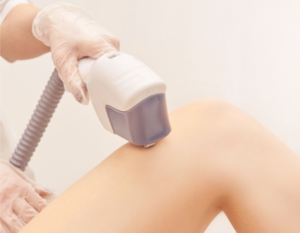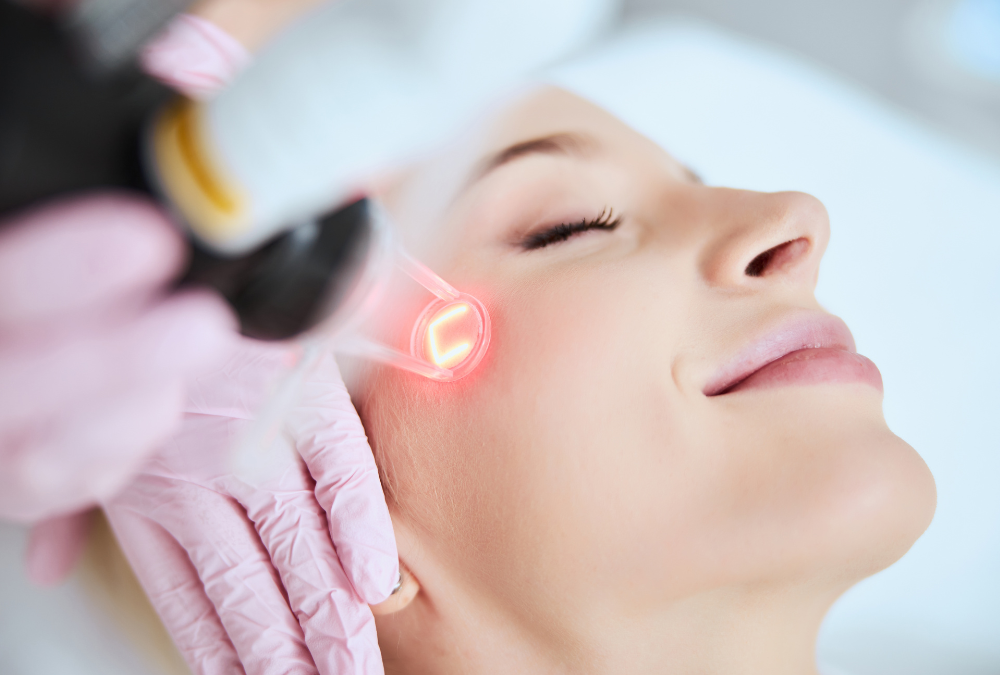In the ever-evolving world of skincare, the pursuit of youthful, radiant skin continues to drive remarkable innovation. Among these innovations, laser resurfacing has emerged as a leading cosmetic treatment, promising the achievement of nearly flawless skin. As the desire for clear and rejuvenated skin becomes increasingly widespread, we take a comprehensive look at laser resurfacing. We delve into the types of laser resurfacing, safety considerations, effectiveness and longevity of results, associated costs, ideal candidates, recovery processes, and the critical importance of a personalized approach.
Understanding Laser Resurfacing
At its core, laser resurfacing stands as a state-of-the-art cosmetic procedure that harnesses laser technology to enhance the texture, tone, and overall appearance of the skin. This cutting-edge treatment involves the precise application of controlled laser beams to gently remove the outer layers of damaged skin, unveiling fresher and healthier skin beneath. By targeting concerns such as wrinkles, fine lines, scars, and sunspots, laser resurfacing offers a transformative pathway to skin rejuvenation.
The multifaceted world of laser resurfacing can be classified into two primary types: ablative and non-ablative. Ablative lasers operate by removing the top layer of damaged skin cells, generating micro-injuries that stimulate collagen production and foster skin regeneration. Conversely, non-ablative lasers penetrate the skin’s deeper layers without causing surface damage, prompting collagen growth without visible wounds.
Safety and Risks
While laser resurfacing offers the allure of transformative results, it’s essential to talk about the potential risks and side effects associated with the procedure. Depending on the specific laser type used and an individual’s skin sensitivity, patients may experience temporary redness, swelling, itching, and discomfort immediately following the treatment. In rare instances, more severe complications, such as infection, scarring, or alterations in skin pigmentation may arise.
Mitigating these risks involves meticulous post-treatment care. Regardless of whether one opts for ablative or non-ablative laser resurfacing, adhering diligently to the recommended cleansing, moisturizing, and sun protection regimens is of paramount importance. This not only accelerates the healing process but also contributes significantly to the attainment of optimal results.
Effectiveness and Duration of Results

Ablative lasers, such as CO2 lasers, have been renowned for their impressive ability to address deep wrinkles, pronounced scars, and significant sun damage. However, they usually involve a more substantial recovery period, during which the skin regenerates and heals. This can range from several days to a few weeks, depending on the depth and intensity of the treatment. On the other hand, non-ablative lasers, like fractional lasers, offer a milder approach with less downtime, making them suitable for individuals with busy lifestyles or those seeking less invasive treatments. The effects of non-ablative treatments may take a bit longer to become fully evident, often requiring multiple sessions spread over several weeks or months.
Cost and Affordability
The financial investment associated with laser resurfacing displays significant variance, contingent upon factors such as geographic location, the practitioner’s expertise, and the type of facility administering the treatment. On average, the cost spans a range from several hundred to several thousand dollars per session. As individuals consider embarking on the journey of laser resurfacing, it’s essential to factor in not only the financial dimension but also the potential need for subsequent treatments to maintain and enhance the achieved results.
Ideal Candidates
Deciding whether laser resurfacing aligns with an individual’s needs involves a comprehensive evaluation of various factors. Those grappling with concerns such as fine lines, wrinkles, acne scars, and uneven skin tone stand to gain substantial benefits from the treatment. However, specific conditions such as active acne, open wounds, or a history of keloid scarring might render someone ineligible for the procedure. A thorough consultation with a seasoned Laser Safety Expert becomes a prerequisite for determining eligibility and charting a tailored course of action.
Recovery Time and Downtime
The duration of recovery following laser resurfacing is dependent upon the laser type employed and the depth of the treatment. Ablative lasers typically entail a longer downtime, ranging from one to three weeks. On the contrary, non-ablative lasers, boasting a less invasive nature, often result in shorter recovery times, with redness and swelling dissipating within a few days. Having realistic expectations about the recovery journey and adhering meticulously to the provided guidelines are important for achieving an optimal healing trajectory.
Making the Decision: Personalized Approach
The decision to undergo laser resurfacing is a personalized approach that factors in an individual’s distinct skin goals and requirements. While the allure of attaining impeccable skin is undeniable, seeking counsel from a qualified professional becomes pivotal in determining the most suitable course of action. A seasoned Laser Safety Expert brings forth invaluable insights, conducts a comprehensive assessment of one’s skin condition, and extends recommendations based on the most appropriate laser treatment.
The consultation process should include an open dialogue where the patient’s concerns, goals, and expectations are thoroughly discussed. This exchange of information empowers both the patient and the medical professional to align their visions and co-create a treatment plan tailored to the patient’s unique needs. Factors such as the desired level of improvement, tolerance for downtime, and budget considerations all play into the decision-making process.
Conclusion
In the landscape of skincare advancements and treatments, laser resurfacing emerges as a powerful solution for realizing smoother, more youthful skin. The uniqueness of each individual’s skin type, concerns, and inclinations underscores the importance of a customized approach. As you embark on this transformative journey, remember that attaining vibrant skin is not just a destination but a step-by-step voyage that deserves careful consideration and expert guidance.
Call to schedule your consultation for laser resurfacing at 949-704-5032!

